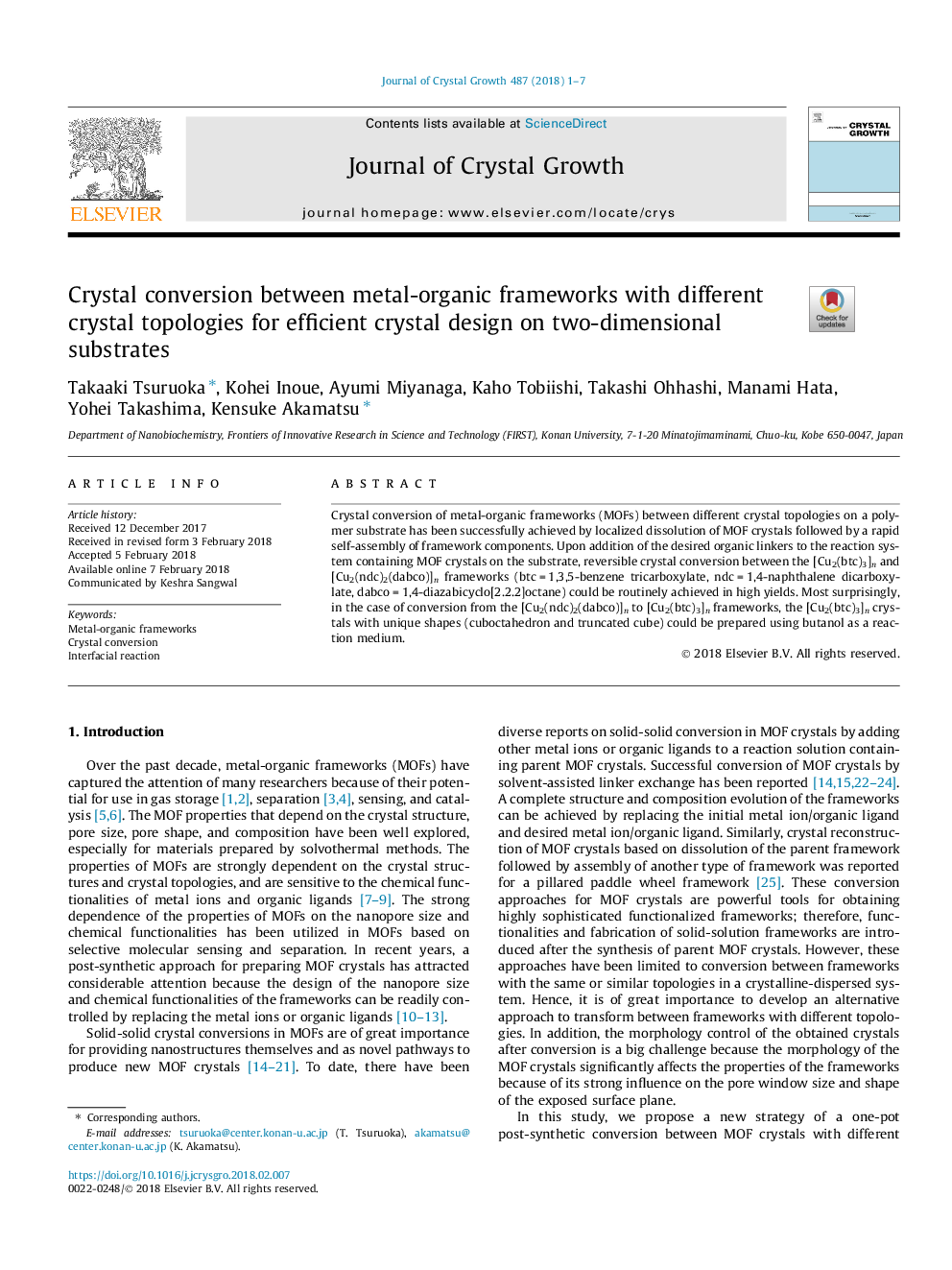| Article ID | Journal | Published Year | Pages | File Type |
|---|---|---|---|---|
| 8148685 | Journal of Crystal Growth | 2018 | 7 Pages |
Abstract
Crystal conversion of metal-organic frameworks (MOFs) between different crystal topologies on a polymer substrate has been successfully achieved by localized dissolution of MOF crystals followed by a rapid self-assembly of framework components. Upon addition of the desired organic linkers to the reaction system containing MOF crystals on the substrate, reversible crystal conversion between the [Cu2(btc)3]n and [Cu2(ndc)2(dabco)]n frameworks (btcâ¯=â¯1,3,5-benzene tricarboxylate, ndcâ¯=â¯1,4-naphthalene dicarboxylate, dabcoâ¯=â¯1,4-diazabicyclo[2.2.2]octane) could be routinely achieved in high yields. Most surprisingly, in the case of conversion from the [Cu2(ndc)2(dabco)]n to [Cu2(btc)3]n frameworks, the [Cu2(btc)3]n crystals with unique shapes (cuboctahedron and truncated cube) could be prepared using butanol as a reaction medium.
Related Topics
Physical Sciences and Engineering
Physics and Astronomy
Condensed Matter Physics
Authors
Takaaki Tsuruoka, Kohei Inoue, Ayumi Miyanaga, Kaho Tobiishi, Takashi Ohhashi, Manami Hata, Yohei Takashima, Kensuke Akamatsu,
